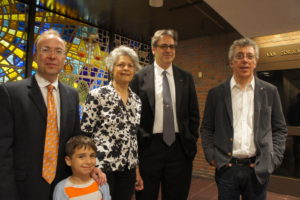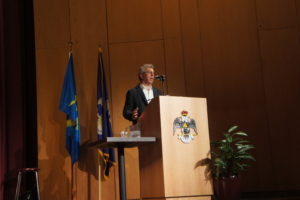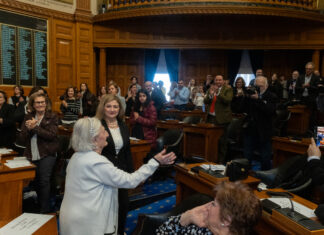
Mirror-Spectator Staff
LEXINGTON, Mass. — Actor, playwright and novelist Eric Bogosian spoke about his new book Operation Nemesis: The Assassination Plot that Avenged the Armenian Genocide to a standing room only crowd at the National Heritage Museum (Scottish Rite Masonic Museum) in Lexington, MA. Almost 400 people were in the audience, with dozens others arriving late (on “Armenian time”) and unable to enter the hall because of strict fire regulations. It was a hometown crowd for Bogosian, with family members including his mother in attendance.
The event was presented by the National Association for Armenian Studies and Research (NAASR) with the cooperation and co-sponsorship of the Tekeyan Cultural Association, Armenian General Benevolent Union (AGBU) New England District, AGBU-Young Professionals Boston, Armenian Cultural Foundation, Armenian Museum of America, Armenian Women’s Welfare Association, Hamazkayin Armenian Educational and Cultural Society, and Project Save Armenian Photograph Archives.
Master of ceremonies Marc Mamigonian began the event by introducing NAASR National Board of Directors Chairman Raffi P. Yeghiayan, who welcomed the audience and pointed out how happy he was that eight other Armenian organizations came together to sponsor the event both financially and through publicity. This cooperation contributed to the full house this evening.










